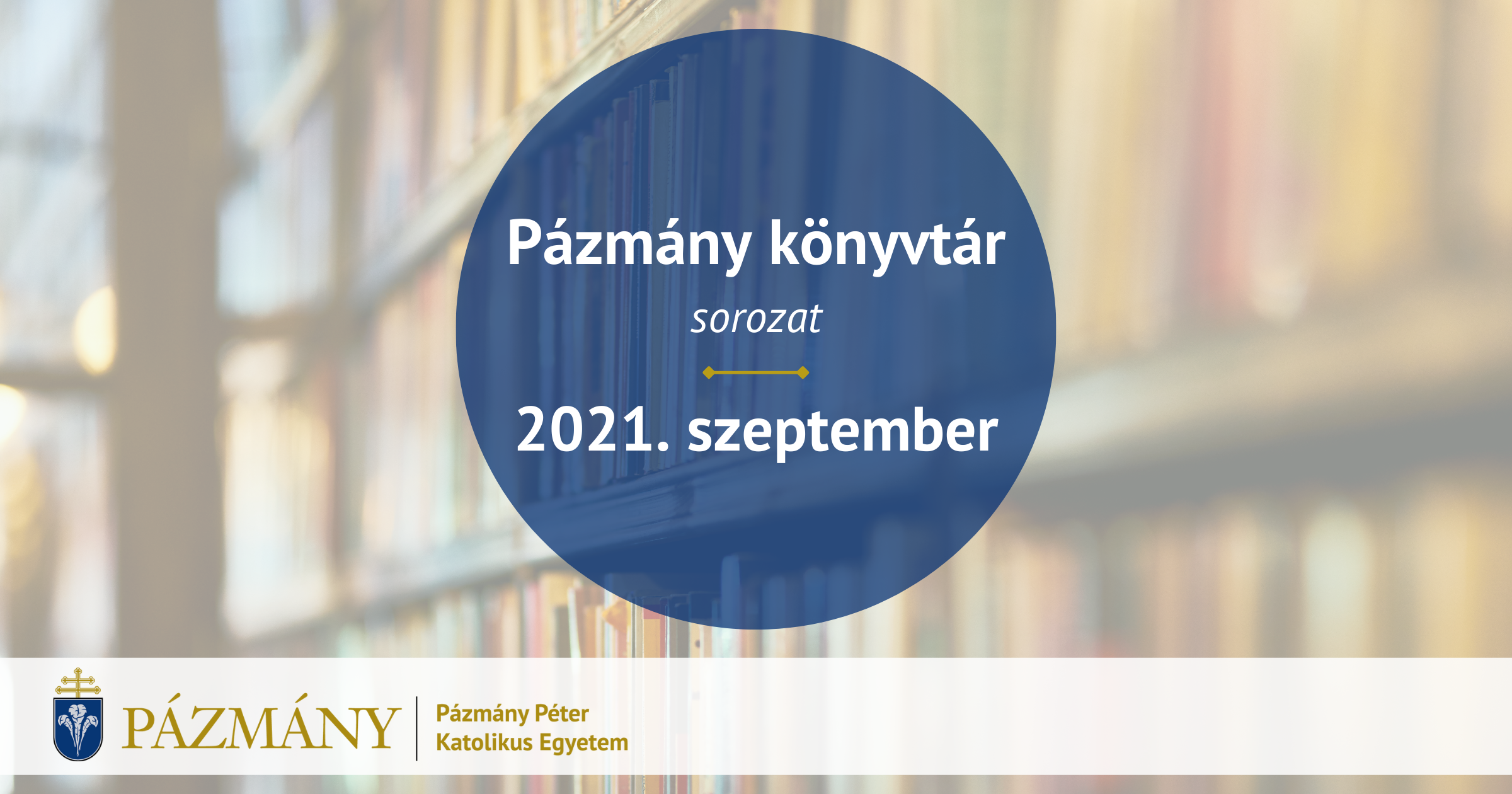
A Pázmány oktatási, kutatási és tudományos tevékenységének egyik fontos fokmérője, hogy oktatóink és hallgatóink szerzői, illetve szerkesztői közreműködésével milyen kiadványok születtek. E szemléletnek megfelelően szeptember hónapban is tovább bővítjük a Pázmány könyvtár sorozatát. Kollégáinknak szeretettel gratulálunk munkájuk eredményéhez, sok sikert és erőt kívánunk a továbbiakhoz! Olvasóinknak kellemes időtöltést összeállításunkhoz!
Bölcsészet-és Társadalomtudományi Kar
Angelo Pecchinoli pápai legációja a magyar királyi udvarban (1488–1490)
A latin és angol nyelvű, magyar rezümével ellátott forráskiadvány olyan dokumentumok sorozatát tartalmazza, amely Angelo Pecchinoli ortei püspök, pápai nuncius legációjához kapcsolódnak.
Pecchinoli 1488-ban érkezett meg a magyar királyi udvarba. Itt Mátyás király haláláig maradt és közelről követte a küzdelmet Magyarország trónjáért az új király, II. Ulászló 1490. szeptemberi megkoronázásáig. A CVH II/8. tomusának angol nyelvű főcíme: „The Legation of Angelo Pecchinoli at the Court of the King of Hungary (1488–149)”. A latin forrásszövegek használatát, értelmezését alapos bevezetőtanulmány, regeszták, apparátus és index segíti. A magyar történelemmel foglalkozó cseh történész, Antonín Kalous „Angelo Pecchinoli pápai legációja a magyar királyi udvarban (1488–1490)” c. kötete a Fraknói Kutatócsoport és az olmützi egyetem kooperációjának köszönhetően készült el, és lát most napvilágot.
Információs Technológiai és Bionikai Kar
The Blood-Brain Barrier in Aging
Erdődy Franciska és Bors Luca Anna legújabb tanulmánya a Factors Affecting Neurological Aging: Genetics, Neurology, Behavior, and Diet című kötetben olvasható.
Blood-brain barrier is an anatomical structure of microvessels in the brain, which is responsible for the maintenance of brain homeostasis and protection against the harmful molecules and microorganisms. It includes cellular components (endothelial cells, pericytes, astrocytes, and the supporting microglia and neurons) and has also molecular elements (like tight junction and adherens junction proteins between the endothelial cells, and efflux transporters expressed on the surface of endothelia) and the barrier is supported by the basal membrane around the capillaries. In aging, the different participants of this barrier are changing and this leads to increased permeability of the brain capillaries to water, chemicals, and circulating cells. The increased penetration of these molecules into the brain can lead to edema, inflammation, toxicity, or accelerated central side effects of drugs. The morphological and molecular changes can be observed in physiological aging and age-related neurodegenerative disorders as well. To slower the process of blood-brain barrier breakdown, enhanced physical activity can be recommended.
Készítette: PPKE Kommunikáció/Hevér Kinga Szilvia



